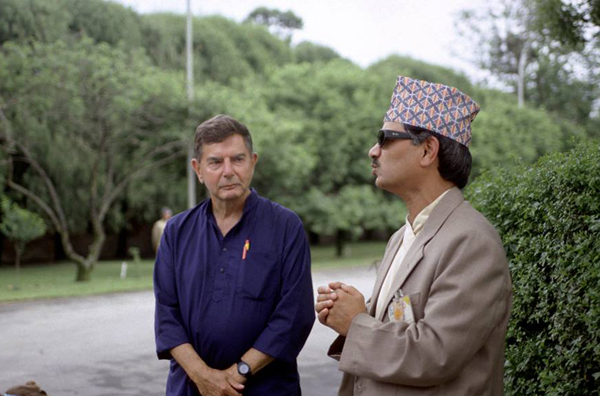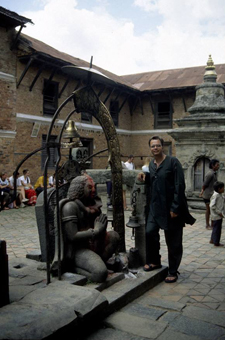Media advisory: Earthquake has damaged much of Nepal's cultural heritage

LAWRENCE — The deadly earthquake in Nepal has leveled a significant number of centuries-old temples and monuments.
University of Kansas anthropology researchers – Professor John Hoopes and Professor Emeritus Felix Moos — in 2000 were leaders of a study abroad trip to Nepal with a group of KU students. Both are available to comment on the issues Nepal faces in rebuilding from the earthquake and seeking to preserve damaged monuments.
Moos said because the earthquake damaged so many urban and rural communities, links with the Nepali military are an important part of the recovery and rebuilding efforts because the military has the means and structure to deal with large-scale emergencies.
"Where anthropologists can help best is their special understanding of Nepali culture. In order to design long-term assistance programs it is essential to know and understand the local culture. Politics are just one part of the Nepali culture," Moos said. "Nepali Buddhist monasteries like those in Boudha and elsewhere are important points of contact because they are used to, for example, feed and house large numbers of people."
 Hoopes in an interview discusses damage to ancient temples and monuments.
Hoopes in an interview discusses damage to ancient temples and monuments.
Q: What is the significance if these monuments from centuries ago are destroyed?
Hoopes: Nepal has an ancient heritage stretching back more than 2,000 years that includes some of the most sacred sites in both Buddhism and Hinduism as well as syncretistic blends of each. This includes some of the oldest examples of the pagoda, a well-known temple style.
Photo documentation indicates that some of these temples have been completely destroyed. Others have been severely damaged. Sadly, the urgency and costs of assisting the over 8 million people whose lives have been affected by the catastrophe must focus on health, housing and safety.
This means that the priority of conserving cultural heritage drops way down the list until the welfare of the population is more stable. Unfortunately, Nepal is one of the poorest countries on the planet. It is also a nation of children, with more than 50 percent of the population below the age of 21. These children have lost much of their ancient heritage, temples that have preserved exactly the beliefs and values that have strengthened the resilience of the population.
Q: Is there really anything Nepal can do to rebuild or repair them? If certain monuments are irreparable, what would anthropologists or archaeologists recommend the Nepalese do?
Hoopes: The most urgent issue at the moment is helping the people whose lives are in danger and then providing stability for those whose livelihoods have been destroyed. Foreign aid to help rebuild the infrastructure of Nepal should take ancient sites and monuments into consideration and seek to do everything possible to preserve them, even if they are in ruins.
Many ruined sites are still of great touristic interest as archaeological sites. Tourism has long been a major source of revenue for Nepal, and these sites should be regarded for their potential economic value.
At the same time, it is urgent that international authorities do everything possible to prevent looters and thieves from profiting from this tragedy. There should be an immediate and well-enforced moratorium on the purchase and shipping of Nepalese antiquities, with vigilance against smuggling and sales (including those by online antiquities dealers). In tragedies such as these, unscrupulous dealers are quick to take advantage of the chaos, stealing and selling cultural property that belongs to the people of Nepal.
Q: What is the significance of these sites in Nepal?
Hoopes: It is difficult to underestimate the religious significance of sacred sites in Nepal. This country was the birthplace of the Buddha and has some of the most holy stupas in the Buddhist religion.
This includes the Tibetan Buddhist stupa at Bodhinath. It also has some of the most sacred sites in the Hindu religion, including Swayambhunath and Pashupatinath. For Hindus and Buddhists, the destruction of cultural properties in Nepal is as if temples in Rome, Jerusalem and Mecca had collapsed for Christians, Jews and Muslims.
With well over a billion practicing Hindus and hundreds of millions of practicing Buddhists, the damage and loss to ancient sacred structures is a tragedy of unimaginable proportions. Attention to and restoration of damaged structures must take their profound religious significance into account, especially as it affects the hope and resilience of the people of Nepal.
Photos: At top, Felix Moos. Above right, John Hoopes. Both photos were taken when the professors guided a KU study abroad trip to Nepal in 2000.